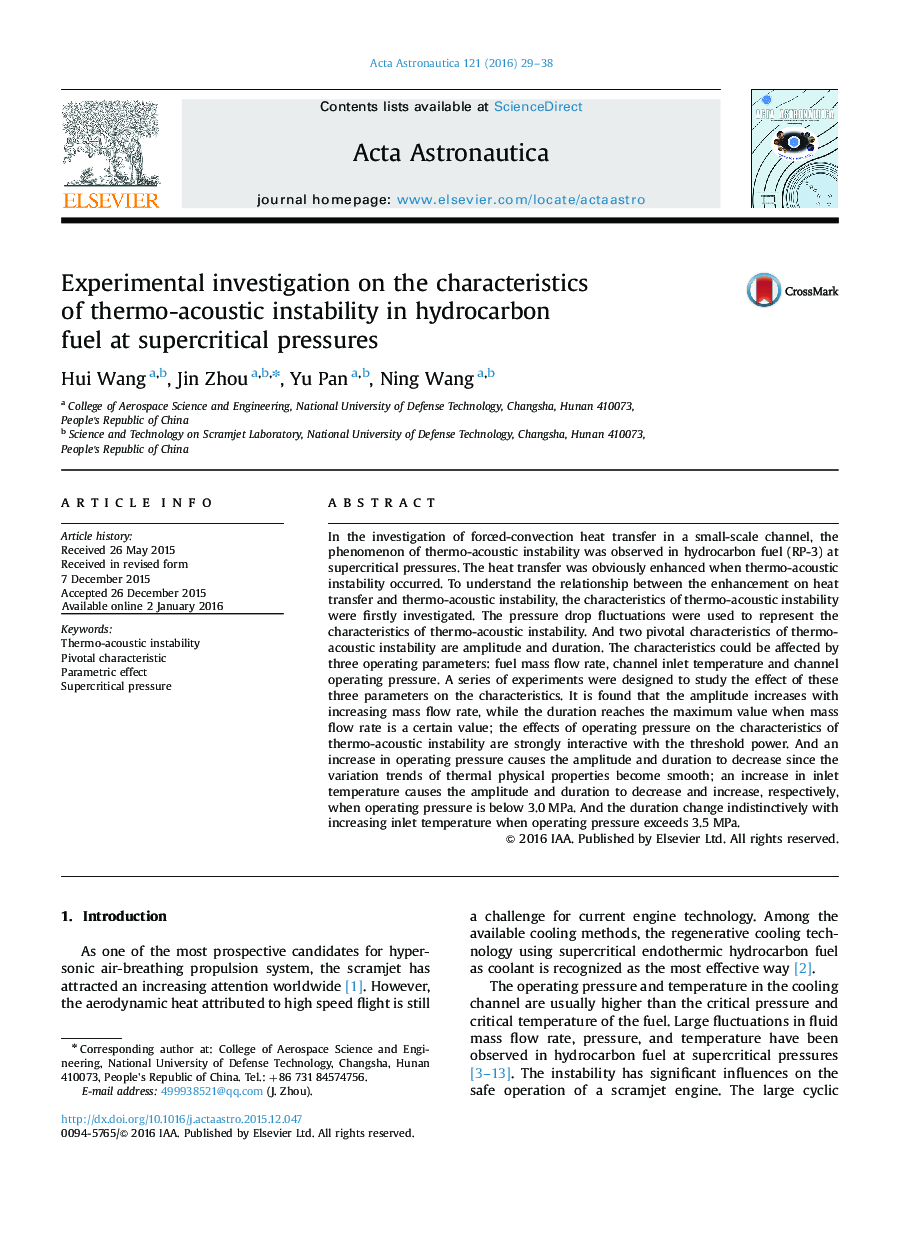| کد مقاله | کد نشریه | سال انتشار | مقاله انگلیسی | نسخه تمام متن |
|---|---|---|---|---|
| 1714213 | 1519933 | 2016 | 10 صفحه PDF | دانلود رایگان |
• Two characteristics of thermo-acoustic instability are amplitude and duration.
• An increase in mass flow rate causes the amplitude to increases.
• The amplitude decreases with increasing operating pressure and inlet temperature.
• The duration varies non-monotonously with increasing mass flow rate.
• An increase in operating pressure causes the duration to decrease.
In the investigation of forced-convection heat transfer in a small-scale channel, the phenomenon of thermo-acoustic instability was observed in hydrocarbon fuel (RP-3) at supercritical pressures. The heat transfer was obviously enhanced when thermo-acoustic instability occurred. To understand the relationship between the enhancement on heat transfer and thermo-acoustic instability, the characteristics of thermo-acoustic instability were firstly investigated. The pressure drop fluctuations were used to represent the characteristics of thermo-acoustic instability. And two pivotal characteristics of thermo-acoustic instability are amplitude and duration. The characteristics could be affected by three operating parameters: fuel mass flow rate, channel inlet temperature and channel operating pressure. A series of experiments were designed to study the effect of these three parameters on the characteristics. It is found that the amplitude increases with increasing mass flow rate, while the duration reaches the maximum value when mass flow rate is a certain value; the effects of operating pressure on the characteristics of thermo-acoustic instability are strongly interactive with the threshold power. And an increase in operating pressure causes the amplitude and duration to decrease since the variation trends of thermal physical properties become smooth; an increase in inlet temperature causes the amplitude and duration to decrease and increase, respectively, when operating pressure is below 3.0 MPa. And the duration change indistinctively with increasing inlet temperature when operating pressure exceeds 3.5 MPa.
Journal: Acta Astronautica - Volume 121, April–May 2016, Pages 29–38
